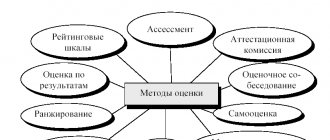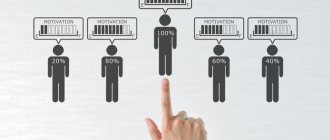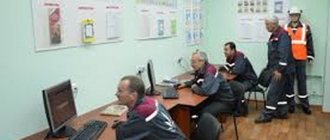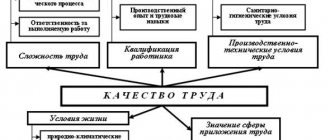What are the differences between material and non-material motivation of employees? What are the types and examples of non-material motivation? How to motivate staff non-materially?
Probably everyone will agree that in order to create a cohesive team, subordinates need to be provided with appropriate conditions. And it’s good when the enterprise’s budget allows the introduction of decent monetary incentives.
But what to do when material possibilities leave much to be desired? Practice other types of staff remuneration and combine them with monetary motivation. Practice shows that material incentives work much more effectively in combination with various types of non-material and non-standard types of incentives.
With you is the online magazine “HeatherBeaver” and regular author of publications Anna Medvedeva. Today we will deal with such a concept as non-material motivation of staff.
At the end of the article you will find useful information on how to ensure a new, higher level of communication and work in your team.
So let's begin!
What is non-material motivation of personnel and how does it differ from material motivation?
Any enterprise, regardless of its specifics, uses a motivation system. It is necessary to create an internal incentive for employees to work well and fruitfully and not look towards competing companies.
All types of motivation methods are divided into 2 large groups - material and intangible. With material ones it is more or less clear, but what are the methods from the second group?
Non-material motivation of personnel is various ways of creating a positive attitude in employees for high productivity. Employees receive bonuses expressed not in monetary terms, but in various other forms.
Non-material motivation of personnel plays a vital role in the overall motivational system. Although it is generally accepted that we work to earn money and the best motivation is a good salary, practice shows that we cannot do without non-monetary incentives.
The need for additional motivation arises when:
- violations of the employment contract;
- excessive workload;
- irregular working hours;
- uncomfortable working conditions, etc.
To avoid a distorted idea of non-material motivation, we will highlight the main aspects and principles in the approach to this issue, and also divide them into positive and negative.
Advantages and disadvantages of non-material motivation:
| № | Criterion | + | — |
| 1 | Significance in the motivation system | Perfectly complements material motivation | Cannot completely replace material motivation |
| 2 | Financial indicator | Does not require large financial expenses | You won't be able to get by without spending at all. |
| 3 | Importance in management | When creating self-motivation among employees, it significantly reduces the efforts and funds allocated for material incentives | Creating intrinsic motivation among employees is not so easy |
For more information about what tasks staff motivation solves, read the article “Staff Motivation.”
Goals and objectives
If a person works for a company only for money, then such an employee will be considered unreliable.
Therefore, the goal of non-monetary incentives is not only to improve performance, but also to achieve loyalty from staff. Of course, this is not so easy to do, but with the right approach you can get a really good employee. Goals:
- Reduce the number of layoffs.
- Attract valuable personnel to the company.
- Improve the quality of work performed.
- Ensure that staff are satisfied with their working conditions.
- Create a good climate in the team.
- Help employees understand the prestige of the company they work for.
In general, non-monetary motivation of employees allows one to achieve good results. To do this, it is advisable to use several methods at once, targeting each employee. Then it will be more likely to achieve the desired effect.
What are the types of non-material motivation of staff - 4 main types
Let us describe in detail the main non-material forms of motivation.
Conventionally, they can be divided into 4 types.
Type 1. Social
This type of non-material motivation is associated with the employee’s desire to move up the career ladder, occupy high positions and develop professionally.
How to motivate employees who have this mindset? Give them important public assignments, involve them in management and decision-making regarding the work process.
Use incentives associated with the social package. Training, payment of sick leave, medical insurance, travel vouchers.
Type 2. Psychological
The determining factor here is communication and the environment within the team. Normal communication is unthinkable without a warm, trusting atmosphere.
The following techniques are used here:
- form a team taking into account the individual characteristics of employees;
- organize corporate events so that subordinates communicate with management in an informal setting;
- set a personal example so that employees see the leader’s contribution to the common cause.
Naturally, in a team with friendly relationships, you want to realize yourself.
Type 3. Moral
Such motivation directly depends on people’s need for respect, not only from management, but also from colleagues.
Recognition of quality work and results is expressed in the form of:
- insignia;
- certificates of honor;
- verbal praise;
- inclusion on the honor board.
Note that it is better to do this not face to face, but in the presence of other colleagues.
Type 4. Organizational
This refers to the high-quality organization of workplaces and the entire labor process.
Organizational incentives:
- equipping the workplace with modern technology (in offices - computers and various office equipment, in production - other devices related to the specifics of work);
- allocation of a special room for recreation;
- provision of food on the premises of the enterprise.
Read about other types of motivation in the article “Types of staff motivation.”
Human resource management using the example of Japan
The rapid development of the Japanese economy in the middle of the last century is due to the way relationships with personnel are built in this country. The success achieved is associated with three principles:
- Guaranteed employment when a Japanese worker works for the same company all his life.
- Career growth depending on age and work experience.
- Features of the trade union movement.
Collectivism is too developed in Japan. Employees of the same company are almost family. Group psychology helps solve not only production problems, but also personal ones related to the achievement of individual goals.
Non-material and material motivation of employees using examples from practice
How to motivate staff non-materially - practical tips and recommendations
Now we offer you some tips on how to improve non-material motivation of staff.
Analyze whether you are using all the possibilities in your practice. And if not, then take note.
Tip 1. Recognize the employee’s achievements and praise him
This is one of the most effective ways to intangibly increase motivation. Employees who are well-recognized by their leader feel valued and respected, and strive to achieve higher levels of performance.
Also, if you loudly celebrate the merits and achievements of good employees, this will be an incentive for everyone else to increase their productivity. Besides, it’s always nice when you work in the same team with cool specialists.
Tip 2. Strive to create a favorable psychological microclimate in the team
A tense and hostile atmosphere not only reduces employee productivity, but also contributes to the loss of valuable personnel. Because people spend a significant part of their lives at work and everyone strives to be in a good team, and not in a jar with scorpions.
Example
Svetlana was hired as an engineer at a prestigious construction company. Her joy knew no bounds.
However, in the first month all the joy dried up. Although Svetlana was a competent specialist, she still had to ask her colleagues questions due to ignorance of the specifics of some issues.
However, in the closed team there was no mutual assistance and support. None of the employees tried to help; on the contrary, they deliberately put a spoke in her wheels in order to show the new engineer in an unfavorable light. It was simply impossible to work in a state of constant stress.
A month later, Svetlana began looking for a new job and soon left for another company on the same salary. True, the percentage of bonuses here is somewhat lower, but the friendly atmosphere in the team inspires her to increase the level of professionalism.
Tip 3. Provide employees with opportunities to learn and improve their skills
The opportunity for training and advanced training is an advantage for any company.
It is not overlooked by young ambitious specialists who strive to expand their knowledge base and improve their professionalism.
An organization that provides such opportunities is always in an advantageous position. After all, not every employee is able to pay for additional training on their own.
Tip 4. Create conditions for employee career growth
There are probably few workers in the world who want to stay in the same position and do not strive to move to a more prestigious one. Therefore, one of the mandatory points of any motivational program should be career advancement.
Create a talent pool of talented candidates. If your company does not provide opportunities for career growth, such employees will work only to gain experience, but will choose other companies for development and promotion.
Tip 5. Hold professional skills competitions among employees
Through such competitions, create an atmosphere of healthy competition among employees. Moreover, employees need to be motivated not by fear of remaining on the periphery, but by the desire to be among the best, which everyone can be, and not just a select few.
This technique has another advantage. It will certainly identify the strongest employees, and you will know whose professional development is worth spending the company’s resources on.
Tip 6. Introduce a system of rewards and bonuses
All types of employees appreciate the additional benefits that their home business provides. The bonus system shows that the organization values its personnel and takes into account their needs.
What types of bonuses can be used:
- partial or full payment for a gym membership;
- issuance of gift certificates;
- provision of places in kindergarten for children of employees;
- lunches at the expense of the organization;
- free travel on public transport, etc.
There are many options, just use your imagination. The main thing is not to act at random, but to study the demand for such benefits.
Tip 7. Provide seating areas
Naturally, workers with chronic fatigue syndrome experience reduced productivity. Therefore, the presence of rest areas at work is as necessary as good conditions.
Five minutes with tea and coffee provide an opportunity to relieve stress and chat on topics distracted from work. Maybe someone will want to do so-called office fitness. In any case, employees have the right to a few minutes of rest in addition to the traditional lunch break.
In the video you will find other useful and interesting tips on non-material motivation.
Examples of non-material incentives for employees
Material and non-material rewards, as well as mixed ones, are considered as incentives. However, they can be somewhat peculiar.
Material
- Incentives of a material nature, aimed not at the employee, but at his household: a subscription to a salon, provision of additional education, etc.
- For the lower tier of employees there are bonuses, for the middle tier - a percentage of profits and for the top tier - ownership of company securities.
- Ceremonial events, gifts and bonuses for those who have been working in the company for a long time.
- Gift certificates giving the right to purchase goods in a particular retail chain for a specified amount.
- Subscription to high-end magazine products, membership in clubs and various types of associations, which are offered to the employee to choose from.
- Dining certificates that allow you to visit expensive restaurants with family members.
- Specific gifts related to employee hobbies.
Non-material incentives for employees
- Verbal gratitude.
- Awarding the title “Best Employee” based on the results of the month.
- Transfer to another job horizontally, when it is not intended to promote career growth, but to provide more comfortable working conditions.
- Hanging framed thank you letters in a specially designated place.
- Placing information on the notice board located in the staff rest area indicating that the rewarded employee completes all tasks assigned to him on time and with high quality.
- Planning work schedules and rest time taking into account the wishes of the employee.
- Placing a photograph in a newspaper published by a company as a corporate publication.
- Issue a message to express gratitude for good work.
- Organization of ceremonial farewells for employees who have shown themselves to be positive and who are leaving the company due to a change of job.
- Expanding the circle of authority without changing the workplace.
- Recording in a personal file, which can be understood as a work book (see When will work records be cancelled?), thanks.
Mixed methods of personnel incentives
- Creation of a photographic album reflecting the employee’s work activities.
- Symbolic gifts with inscriptions such as “Best Worker”: mug, T-shirt, etc.
- Original badge.
- Office supplies, distinguished by high quality execution, in the form of a rolling pennant: from one employee to another as a result of labor success for a certain period (week, month).
- Luncheons, when distinguished employees meet at the same table with the company's management.
- Sending to seminars or similar events outside the city where the company is located, the topics of which are of interest to the rewarded employee.
- Visiting exhibitions with a specific specialization.
- Training paid by the company in view of possible career growth or expansion of existing responsibilities.
- Mentoring (paid) within the company, carried out at the peer level.
What influences the formation of high motivation - an overview of the main factors
To conclude the topic, we will consider additional factors on which increasing the level of motivation in a team depends.
Pay attention to whether they are present in your motivation system.
Factor 1. Strength and competitiveness of the organization
The high status of the company and its impeccable image are in themselves excellent motivation.
Firstly , good specialists strive to work at such an enterprise.
Secondly , the valuable personnel already on staff do not tend to go elsewhere.
Thirdly , the awareness that you work in such an organization contributes to personal development and the desire to perform your job duties with high quality.
Such non-material motivation of employees is a rather powerful factor even without comparison with others.
Factor 2. Strong management of the enterprise
Talented leaders should be found not only in the highest positions, but also at all levels of the organization's structure. After all, as you know, a leader’s personal example is one of the most powerful motivators for any category of employees.
Do you know what mistake you can make when choosing department heads? Appoint workers not with appropriate abilities, but according to length of service or professional talent. No matter how much experience such an employee has, if he does not have leadership abilities, this will easily demotivate strong and ambitious employees.
“Gogha, why didn’t you start studying further?”
"What for?"
“And you could become a good leader.”
“Do you think everyone should be a leader?”
“No, not everyone should. But everyone wants it!”
(film “Moscow Doesn’t Believe in Tears”)
Factor 3. Compliance with the rules of the labor code
Another important factor that speaks of the reliability and stability of the enterprise and guarantees the protection of the interests of its employees. A decent salary, paid vacation and sick leave, and most importantly, the transparency of the payment system is a very powerful incentive for a patriotic attitude towards your organization.
In institutions where the rules of the labor code are not followed, there is always a high staff turnover. This is not surprising - no one wants to strive for some achievements where the interests of workers are not taken into account.
Factor 4. Current corporate culture
It is necessary that each employee feels not like a small cog in a soulless machine, but an important part of the team, on the quality of whose work the success of the entire enterprise depends. Each team member should know that his contribution to the common cause is irreplaceable and he is valued here as a highly qualified employee.
This motivational technique creates a high level of responsibility and a sense of devotion among subordinates both to their team and to the organization as a whole.
Our article “Motivation and Stimulation of Personnel” will help you understand the difference between motivation and stimulation.
Basic rules for developing and introducing motivational programs
Firstly , non-material motivational programs must cover all employees. If you work in the retail segment, it is worth considering not only “sales people”, but also employees of support services and departments. Of course, it is easier to introduce these rules if the company has a small staff and the manager knows each employee personally.
But what about those companies where the number of people has long gone beyond the line of 200-300 people? Our answer is to work with line managers who know the people in their departments. Only with a qualitative analysis of all information can you develop and implement effective non-financial motivation programs for all categories of employees in your business.
Secondly, each new incentive program must solve the problems of your business. For example, if you want to build a strong federal network with a common corporate culture, common regulations and the same views on business among your employees, then you should pay special attention to motivational programs aimed at free training within the company. It will be necessary to build an active mentoring system, in which employee mentors will be interested in quality training for newcomers and in additional bonuses.
Thirdly, you must choose the right way to motivate your employees. A very common mistake is when we think that what interests and motivates us will motivate other people. If we look at Abraham Maslow's pyramid, we see that everyone is driven by 5 needs: physiological needs, the need for safety and protection, social needs, the need for esteem and self-esteem, and the need for self-actualization.
You can determine what type of need is dominant among your employees using questionnaires, surveys, open meetings, etc.
Fourth, you must take into account the novelty effect. Each new non-material motivational program must be different from the current and previous ones. We recommend introducing new programs every 6-8 months.
Rules of application
The peculiarity of non-material stimulation is that you need to find an individual approach to each employee.
This is the basic rule for using the system. Therefore, it is important to analyze what each employee needs. It is worth using several ways to influence the team at once. They are applicable both for Russia and for other countries. The system should also be reviewed regularly and updated if necessary.
Second Life Approach
The methods of non-material motivation of employees used at this enterprise are also quite interesting. The company specializes in supporting three-dimensional social networks. It was decided to launch a software platform within the company that would allow those wishing to leave feedback on the work activity of their colleagues. This method of non-material motivation of employees made it possible for everyone to send a note to another person, encouraging his activities or indicating his gratitude for help or a job well done.
Information published through the internal system is publicly available. Every employee with access to the network can view the notes. At the same time, such an example of non-material motivation of employees provides enough information for managers, allowing them to assess the performance of each individual employee. The system allows you to collect data, give assessments of labor productivity, and based on the information received, you can make management decisions in personnel policy. What is not an impeccable example of non-material motivation of employees?
An alternative approach to the problem
The listed motivational methods and paths are quite good, although they are associated with certain costs. But companies where they pay good wages, where the work is stable and prestigious, and where the management system is built in a dictatorial form, may not invest anything at all in motivational aspects. At such enterprises, employees are already glad that there is no criticism from their superiors. No comments - that's motivation for you. However, only a stress-resistant person can work at such an enterprise, so this option is not suitable for everyone and not always. For a small company, this path is hardly reasonable, but large organizations, monopolists in their field, may well resort to this option.
An equally important aspect that helps motivate staff is career growth opportunities. Development is not always associated with an increase in wages, or in a new position the payment will be slightly higher than in the previous one, but it ideally satisfies ambitious people. In addition, a person understands that he is valued and his efforts are not in vain.










